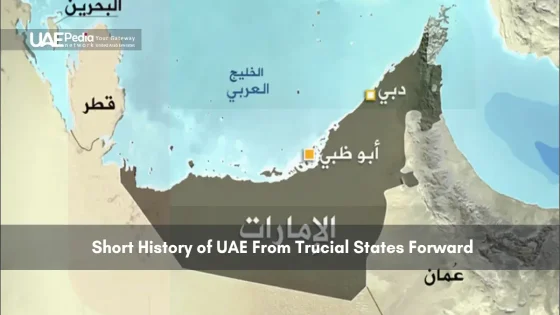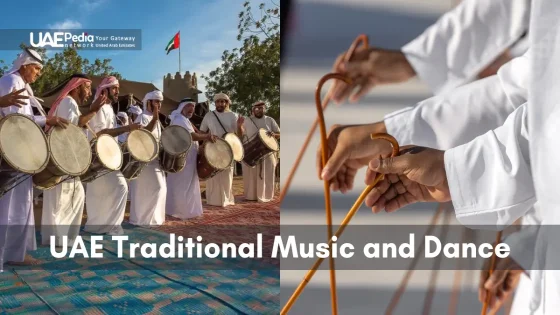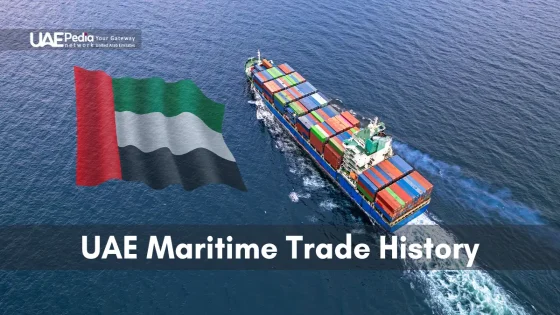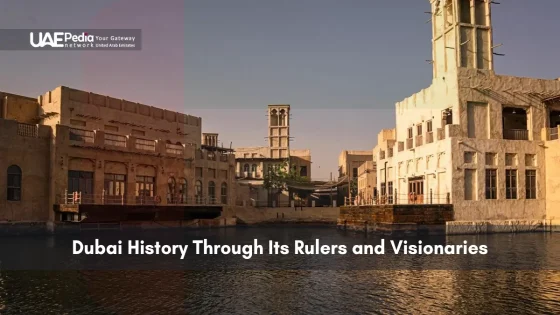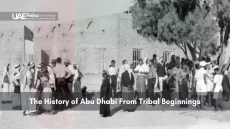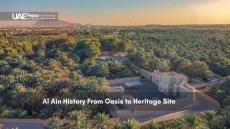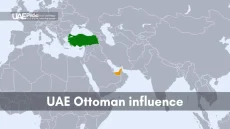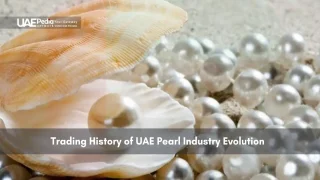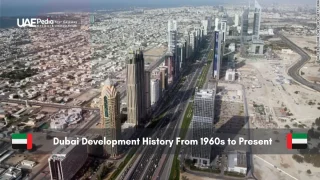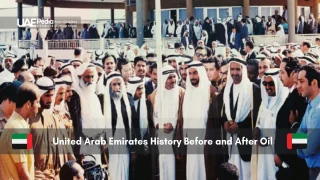What if we told you the gleaming towers of Dubai and Abu Dhabi’s Louvre branch aren’t the United Arab Emirates’ first global achievements? This federation’s story begins not with oil discoveries, but with Bronze Age merchants navigating windswept dunes and coastal waters.
Long before skyscrapers, the Arabian Peninsula’s eastern edge thrived as a crossroads. Archaeologists have found stone tools proving human presence here over 125,000 years ago. By 3000 BCE, the Magan people traded copper with Mesopotamia and the Indus Valley—early proof of this region’s knack for connection.
The 19th-century Trucial States era reshaped everything. British-protected sheikhdoms transformed tribal life into structured governance. Pearl diving and fishing sustained communities until the 1950s, when geological surveys revealed the game-changer: black gold beneath the sands.
December 2, 1971, marked the birth of the UAE we know. Seven emirates united, blending Bedouin traditions with bold modernization. Today’s fusion of futuristic cities and heritage sites reflects a truth: this country’s power stems from its ability to honor the past while racing toward tomorrow.
Key Threads in the Tapestry:
- A 125,000-year timeline linking stone-age tools to AI-powered cities
- Trade networks that predate pyramids—still vital in today’s economy
- The Trucial States’ pivot from pearling villages to petroleum diplomacy
- How tribal alliances evolved into a federation influencing global affairs
Tracing Early Civilizations and Prehistoric Roots
What if the UAE’s true marvels aren’t its towers, but the 5,000-year-old tombs hidden in its deserts? Beneath the modern buzz lies a time capsule of flint tools, circular graves, and trade networks that predate Rome by millennia.
Stone Age Secrets in the Sand
Archaeologists digging near Umm Al Quwain found something extraordinary—stone hand axes dating back 130,000 years. These Paleolithic tools show early humans adapted to Arabia’s harsh climate, following animal herds across now-vanished grasslands. By 6000 BCE, Neolithic communities farmed dates and fished using bone hooks still found in the area today.
Bronze Age Boom Towns
The real game-changer came around 3000 BCE. The Umm Al Nar culture (named after an Abu Dhabi island) built beehive-shaped tombs holding hundreds of bodies. Their copper trade reached Mesopotamia and Pakistan. Later, the Wadi Suq people (2000–1300 BCE) crafted distinctive pottery and jewelry, evidence of which we’ve found at Dalma Island.
| Culture | Time Period | Key Discoveries |
|---|---|---|
| Neolithic | 6000–3500 BCE | Fishing gear, early agriculture tools |
| Umm Al Nar | 2600–2000 BCE | Copper smelting, monumental tombs |
| Wadi Suq | 2000–1300 BCE | Decorated ceramics, soft-stone vessels |
These ancient trade networks laid the groundwork for the UAE’s position as a global crossroads. From Umm Al Quwain’s pearl beds to Abu Dhabi’s burial sites, every shovel of sand reveals how early arab emirates residents mastered survival in this rugged landscape.
Archaeological Discoveries That Shaped the Emirates
Ever wondered how the Emirates’ desert sands conceal secrets older than the Pyramids? Modern excavations reveal ancient marketplaces, ritual sites, and workshops that rewrite our understanding of this region. Let’s dig into the dirt—literally—to uncover stories etched in pottery shards and forged in bronze.
Groundbreaking Sites Rewriting History
Three locations stand out as time capsules:
- Mleiha: This Sharjah site’s Iron Age tombs show trade links stretching to Mesopotamia. Archaeologists found coins from Greece and India—proof the area was a crossroads 2,300 years before oil discoveries.
- Ed-Dur: Umm Al Quwain’s coastal pearl hub bustled with Roman merchants. Recent digs uncovered glassware from Syria and silver drachms minted under Emperor Tiberius.
- Saruq Al Hadid: Dubai’s “Iron Age Workshop” yielded 2,500 metal artifacts, including snake-shaped jewelry. This place reveals early mastery of smelting technologies.
Modern labs in Abu Dhabi use 3D scanners to preserve fragile finds. As one archaeologist told us:
“Every artifact is a puzzle piece. When we fit them together, we see how the people here shaped the ancient world.”
The government’s Cultural Heritage Department now protects 35 major sites. Want to witness this detective work firsthand? Visit Sharjah’s Archaeology Museum—their interactive displays let you “decode” pottery inscriptions like a pro.
Emergence of the Trucial States
Picture this: rival sheikhdoms along the Arabian coast trading pearls by day and clashing over fishing rights by night. The early 1800s changed everything when British ships appeared—not as colonizers, but as dealmakers offering peace through parchment.
Treaties That Rewired the Coast
The 1820 General Maritime Treaty was the first domino. Tribal leaders signed agreements banning piracy in exchange for British protection. By 1853, the Perpetual Maritime Truce turned the “Pirate Coast” into the “Trucial States”—a name meaning “truce-keeping territories.”
| Treaty | Year | Key Impact |
|---|---|---|
| General Maritime | 1820 | Ended naval warfare between tribes |
| Perpetual Truce | 1853 | Established British-mediated conflict resolution |
| Exclusive Agreement | 1892 | Formalized protectorate status |
These deals did more than stop battles. They created safe sea lanes for trade, letting pearl divers from Abu Dhabi and Dubai work without fear. As one historian notes:
“These weren’t just pieces of paper—they were survival tools. For the first time, rival tribes had shared rules.”
The policy transformed seven warring territories into a collaborative union. British naval patrols kept the coast secure, while local leaders focused on building economies. This stability became the foundation for the United Arab Emirates’ future federation.
By the 1950s, the Trucial States had evolved from loose alliances into a proto-state. When oil arrived, this framework allowed swift resource sharing—proving that centuries-old peace deals could fuel modern miracles.
The short history of uae: From Trucial States to Modern Nation
Imagine two leaders sipping bitter Arabic coffee in 1968, plotting a future their ancestors couldn’t fathom. Sheikh Zayed of Abu Dhabi and Sheikh Rashid of Dubai knew their union could transform seven emirates into one powerhouse. Their secret weapon? Black gold beneath the dunes and a shared vision for the country.
Oil discoveries in the 1950s flipped the script. Where pearl divers once braved shark-filled waters, geologists now struck liquid fortune. Revenues surged from $300 million in 1971 to $23 billion by 1980. But wealth alone didn’t forge the United Arab Emirates—it took shrewd diplomacy. The 1971 Union Accord wasn’t signed in palaces but desert tents, blending Bedouin tradition with modern statecraft.
| Pre-1971 | Post-1971 |
|---|---|
| Tribal fishing villages | Skyscraper cities |
| Pearl-based economy | Global oil exporter |
| British-protected states | Fully independent nation |
Sheikh Zayed’s famous words still echo:
“Wealth isn’t money or oil. Wealth lies in people, and without them, no fortune lasts.”
Today’s UAE walks this tightrope beautifully. Camel races unfold near AI-powered metros. Gold souks neighbor robot-run cafes. This government-led metamorphosis proves ancient trade routes and modern pipelines can coexist.
Want to taste this fusion? Sip karak chai where Trucial States envoys once bargained. You’re not just drinking tea—you’re swallowing 50 years of audacious nation-building.
Colonial and European Influences in the Region
Imagine cannons roaring off the Arabian coast as Portuguese carracks clash with local dhows. European powers arrived not as tourists, but as forces reshaping the Gulf’s destiny. Their ambitions collided with thriving trade networks, sparking conflicts that would redefine the region’s identity.
Portuguese Incursions and Early European Ambitions
In 1507, Portuguese commander Afonso de Albuquerque stormed Khor Fakkan’s shores. They built forts like Dibba Al-Hisn, seeking control over spice routes to India. Their occupation disrupted pearl diving communities for 150 years. Locals resisted fiercely—archaeologists still find cannonballs embedded in coastal watchtowers.
British Maritime Engagement and the “Pirate Coast” Era
By 1820, Britain shifted tactics. Instead of conquest, they brokered maritime truces with tribal leaders. The infamous “Pirate Coast” became a British-protected zone. Naval patrols cracked down on raiding ships while safeguarding trade lanes. As one merchant’s journal noted:
“The sea turned from battleground to marketplace—same waves, new rules.”
| Colonial Power | Strategy | Legacy |
|---|---|---|
| Portugal | Military forts & trade monopolies | Coastal defense ruins still visible |
| Britain | Treaties & naval oversight | Foundation for UAE’s union |
These encounters forged unexpected alliances. Tribal leaders adapted European negotiation tactics, blending them with traditional government systems. The Gulf’s coast transformed from pirate havens to strategic hubs—a shift echoing in today’s United Arab Emirates.
Trade, Pearling, and Economic Drivers in History
What if the ocean floor held fortunes long before oil rigs dotted the Gulf? For centuries, Emirati divers plunged into turquoise waters clutching nose clips made of turtle shell. Their prize? Lustrous pearls that funded entire communities—nature’s original currency in this region.
Pearl Diving and Maritime Trade Networks
From May to September, pearl dhows sailed at dawn. Crews worked 14-hour days, diving 30 meters on single breaths. The best “Al Thuraya” pearls reached Bombay and Paris markets. A single gem could buy a house in 1900s Dubai. As one diver’s diary reveals:
“We’d sing work songs to time our dives—each verse a heartbeat counting down.”
This wasn’t just an industry. It shaped social bonds. Divers shared profits through the part system—captains took half, crews split the rest. Families thrived on networks stretching to India and East Africa.
Impact of Cross-Regional Commerce
When Japanese cultured pearls flooded markets in the 1930s, the arab emirates pivoted. Dates, fish, and textiles filled trade gaps. Ports like Julfar (now Ras Al Khaimah) became hubs for:
- Persian carpets
- Omani frankincense
- Indian spices
Modern Dubai’s airport-free zones echo this adaptive spirit. Where dhows once carried pearls, cargo planes now transport tech—proof that the united arab emirates’ trade DNA still drives its economy.
Today’s skyscrapers mirror yesterday’s watchtowers. Both eras share one truth: this country transforms challenges into golden opportunities, wave after wave.
Road to Independence: Milestones in National Formation
How did seven distinct emirates become a single nation in just three years? The answer lies in late-night desert meetings, handwritten agreements, and leaders who swapped rivalry for shared purpose. This wasn’t just politics—it was a cultural revolution stitched together over cardamom coffee and mutual ambition.
The Union Accord and Initial Federation Efforts
February 1968 changed everything. Sheikh Zayed of Abu Dhabi and Sheikh Rashid of Dubai met secretly at a desert outpost. Their goal? Unite the Trucial States before British withdrawal. What followed were 18 months of heated debates—tribal leaders argued over borders, oil rights, and government structures.
Key moments shaped the union:
- The July 1971 constitutional conference in Dubai, where rulers drafted a federal framework
- Qatar and Bahrain’s withdrawal from initial talks, cementing the seven-emirate path
- Sheikh Zayed’s famous compromise: “Let our wealth flow like sand across all territory”
On December 2, 1971, the United Arab Emirates flag rose over a new country. But unity wasn’t forced—it grew from shared roots. As one elder recalls:
“We weren’t just neighbors. We were cousins who’d fished the same waters for generations.”
This history lesson lives beyond textbooks. Drive through date palm oases today, and you’ll still hear elders debate those pivotal years—proof that nation-building never truly ends.
Influential Rulers and Visionaries of the Emirates
What makes a nation? For the Emirates, it was two leaders who saw beyond sand dunes and tribal lines. Sheikh Zayed bin Sultan Al Nahyan of Abu Dhabi and Sheikh Rashid bin Saeed Al Maktoum of Dubai didn’t just govern—they sculpted a shared identity from seven distinct territories. Their secret? Treating unity like a desert rose: delicate to grow, impossible to break.
Sheikh Zayed’s Diplomacy of Sands
Sheikh Zayed’s rule began with water. In 1946, as governor of Al Ain, he brokered peace between feuding tribes over oasis rights. This hands-on approach defined his leadership. When oil revenues surged, he famously redirected wealth to Ras Al Khaimah and other emirates, declaring: “A palm tree grows strongest when its roots share nourishment.”
Sheikh Rashid’s Ports of Progress
Dubai’s ruler thought in concrete and cranes. Sheikh Rashid launched the 1971 dredging of Port Rashid against all advice—creating the Middle East’s deepest harbor. His mantra? “Build it, and they will come.” Today, Jebel Ali Free Zone hosts 8,000 companies, proving his vision outlived him.
These architects of the founding fathers of the union balanced tradition with audacity. Zayed’s weekly majlis meetings let citizens voice concerns directly. Rashid transformed fishing villages into trade hubs. Together, they taught a region how to turn shared dreams into steel and glass.
The Role of Islam in Cultural and Political Transitions
Between Dubai’s neon-lit souks and Abu Dhabi’s grand mosques flows a spiritual current older than skyscrapers. Islam arrived here not as conquest, but as a cultural tide reshaping tribal bonds into lasting institutions. Within decades, faith rewired the Arabian Peninsula’s power grid—and its effects still echo in daily life today.
Early Islamic Conversions and the Battle of Dibba
When envoys from Medina reached the coast in 632 CE, they found merchants already versed in Quranic teachings. Trade routes had carried Islam’s message before armies arrived. But the Ridda Wars—a series of 7th-century rebellions—tested this new faith. The pivotal Battle of Dibba (633 CE) saw Muslim forces defeat local tribes resisting conversion, cementing Islam’s hold.
This victory reshaped the area in four key ways:
- Political alliances shifted toward Medina-based caliphates
- Trade networks prioritized Mecca-facing routes
- Arabic replaced local dialects as the language of administration
- Coastal watchtowers doubled as minarets for prayer calls
By the 8th century, pearl divers sang verses from the Quran during dives. Markets closed for Friday prayers. Even the Trucial States’ later treaties reflected Islamic principles of mediation—a tradition visible in today’s United Arab Emirates governance.
“Islam didn’t erase our past—it gave our ancestors a compass,” explains Dr. Amina Al-Hassani, a Sharjah historian. “The same sands that witnessed Dibba’s battle now host interfaith conferences.”
Next time you hear the adhan echo across a city, remember: these calls have united the Arab Emirates’ spiritual and political rhythms for over 1,300 years.
Transformation from Agrarian Roots to Oil Wealth
Picture a landscape where date palms sway beside oil derricks—this duality defines the UAE’s journey from agrarian roots to hydrocarbon powerhouse. Just decades ago, families here measured wealth in camels and crops, not barrels. Then came the 1958 discovery that rewired the region’s DNA: black gold beneath Abu Dhabi’s sands.
The Shift in Socioeconomic Structures
Pre-oil life revolved around trade routes and falaj irrigation systems. Farmers grew dates and raised livestock, while pearl divers braved the Gulf’s depths. Everything changed when drillers struck oil at Umm Shaif. By 1971, Abu Dhabi’s GDP skyrocketed from $30 million to $1.3 billion—a 4,233% leap in 10 years.
New wealth transformed the city’s skyline. Bedouin tents gave way to air-conditioned villas. Yet traditions persisted. As elder Ali Al Hammadi recalls:
“We didn’t abandon our farms—we built schools beside them. My grandchildren study engineering where I once herded goats.”
The government strategically reinvested oil revenues:
- 1966: First paved road connects Abu Dhabi to Al Ain
- 1971: Free healthcare and education for all citizens
- 1980s: Port Zayed expands maritime trade capacity by 400%
Today, 3% of Emiratis work in agriculture versus 35% in energy. But drive through Liwa Oasis, and you’ll still find date markets buzzing beside solar-powered desalination plants—proof that progress here doesn’t erase the past, but builds upon it.
From Ancient Trade Hub to Global Economic Power
Ever stood where camel caravans once camped, now dwarfed by glass towers piercing the clouds? Dubai’s skyline tells two tales: a creek-side trading post whispering through gold souks, and a neon-lit metropolis shouting from the Burj Khalifa’s observation deck. This city didn’t just grow—it exploded, fueled by the same audacity that once sent pearl dhows into monsoon winds.
Evolution of Dubai and the Modern Financial Landscape
In the 1890s, Dubai Creek bustled with wooden dhows carrying Persian carpets and Indian spices. Fast-forward to 2023: the same waterfront hosts robotic cargo loaders at Jebel Ali Port. How? Strategic bets on trade infrastructure. The 1979 Port Rashid expansion tripled shipping capacity. The 1985 Emirates Airline launch connected the arab emirates to 150 cities—before oil revenues peaked.
| Era | Economic Driver | Infrastructure Leap |
|---|---|---|
| Pre-1900s | Pearl & Spice Trade | Natural Creek Harbor |
| 1970-2000 | Oil & Logistics | Port Rashid, Emirates HQ |
| 2000-Present | Tourism & Finance | Burj Khalifa, DIFC |
Dubai’s secret? Treating tradition as rocket fuel. The Dubai International Financial Centre (DIFC) blends Bedouin negotiation customs with blockchain contracts. Gold Souk merchants now accept crypto payments. As developer Sultan Al Habtoor notes:
“We build futures, but never bulldoze roots. Our ancestors traded trust—we just digitized it.”
From abu dhabi dubai highway networks to AI-powered customs checks, this city redefines possibility. Next time you zip through the Palm Jumeirah monorail, remember: those tracks trace the same ambition that once mapped desert trade winds.
Regional Conflicts and Diplomatic Negotiations
What if compasses once guided not ships, but peace talks along the Gulf? For centuries, rival tribes clashed over fishing rights and pearl beds—until ink and diplomacy rewrote the rules. The coast became both battleground and bargaining table, where survival depended on shrewd negotiation.
Maritime Clashes and Treaty Developments
Early 19th-century skirmishes often erupted over oyster banks. Tribal fleets from Abu Dhabi and Sharjah dueled with wooden dhows, each claiming prime diving zones. British envoys stepped in, brokering deals that turned raiding ships into trade vessels. The 1853 Perpetual Maritime Truce wasn’t just paperwork—it reshaped daily life for pearl divers and fishermen.
Three critical policy shifts emerged:
- Shared fishing grounds to prevent resource wars
- British naval patrols enforcing coastal security
- Revenue-sharing agreements between sheikhdoms
These accords balanced tribal autonomy with collective governance. As historian Dr. Layla Al-Mansoori notes:
“The treaties didn’t erase rivalries—they channeled them. Sheikhs learned to duel with pens, not cannons.”
| Conflict | Resolution | Impact |
|---|---|---|
| 1835 Pearl Wars | Seasonal truce agreements | Boosted regional pearling by 40% |
| 1906 Border Disputes | British-mediated surveys | Defined modern emirate boundaries |
| 1949 Fishing Rights | Joint resource management | Laid groundwork for federal union |
Today’s government strategies still echo these deals. When oil rigs sparked new tensions in the 1970s, leaders used century-old negotiation tactics. The result? Shared pipelines and cross-emirate investments that keep the peace—proving yesterday’s ink can still steer tomorrow’s power.
Reflecting on the Legacy and Enduring Spirit of the Emirates
How does a land of dunes become a beacon for the future? The UAE’s story isn’t etched in stone—it’s written in the windswept sands of resilience. From Bronze Age traders to AI-powered cities, this country thrives by honoring its roots while embracing tomorrow.
Ancient tombs whisper of Magan copper merchants. Pearl divers’ songs echo in Dubai’s startup hubs. Oil wealth built towers, but the Arab Emirates’ true foundation is unity. Leaders like Sheikh Zayed and Sheikh Rashid transformed tribal bonds into a federation that balances tradition with modern governance models.
Walk through Abu Dhabi’s Louvre, and you’ll see 7,000 years of history reflected in its dome. Yet the Gulf’s spirit shines brightest in everyday moments—a farmer tending date palms beside solar farms, or engineers brainstorming in majlis-style meeting rooms.
This is a home where past and future dance like desert mirages. One century’s pearl beds become the next’s spaceports. As the sun sets over the United Arab Emirates, one truth remains: its greatest achievement isn’t skyscrapers or oil fields, but the audacity to keep rewriting what’s possible.
The Trucial States—seven sheikhdoms along the Arabian Gulf—signed maritime truces with Britain in the 19th century. After Britain withdrew in 1971, Sheikh Zayed bin Sultan Al Nahyan united Abu Dhabi, Dubai, and five others into a federation, creating the UAE on December 2, 1971.
Pearling fueled coastal communities for centuries, with divers harvesting oysters from June to September. Dubai and Abu Dhabi thrived as trade hubs until the 1930s, when cultured pearls and oil discoveries shifted the region’s economic focus.
These Bronze Age societies (2700–1300 BCE) left tombs, pottery, and copper tools across modern-day Sharjah and Ras Al Khaimah. Their trade networks linked Mesopotamia to the Indus Valley, showcasing the Emirates’ ancient role as a crossroads.
The 1820 General Maritime Treaty ended raids on British ships, labeling the coast “Trucial” for its peace agreements. Later treaties banned slavery and arms trading, laying groundwork for regional stability that eased the 1971 federation.
Post-oil, Dubai diversified with ports like Jebel Ali (1979) and free zones attracting international businesses. Sheikh Rashid bin Saeed Al Maktoum’s infrastructure vision—paired with bold tourism projects—turned the emirate into a trade and finance leader.
Islam arrived in 630 CE, with the Battle of Dibba cementing its spread. Mosques, falaj irrigation systems, and Arabic traditions became pillars of Emirati life, shaping laws, education, and social customs still honored today.
